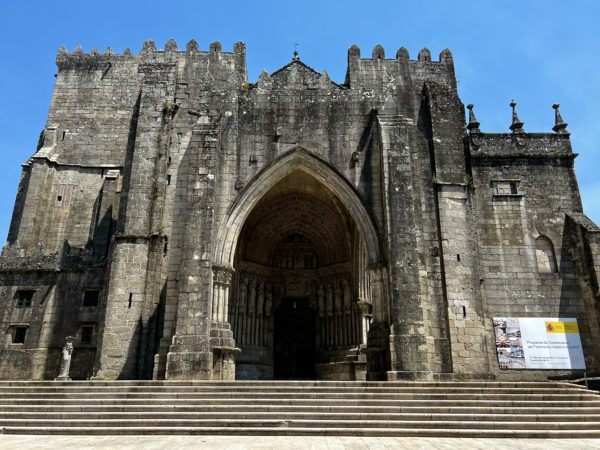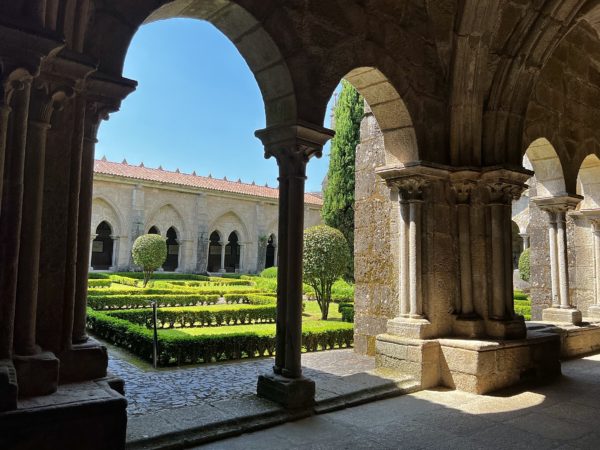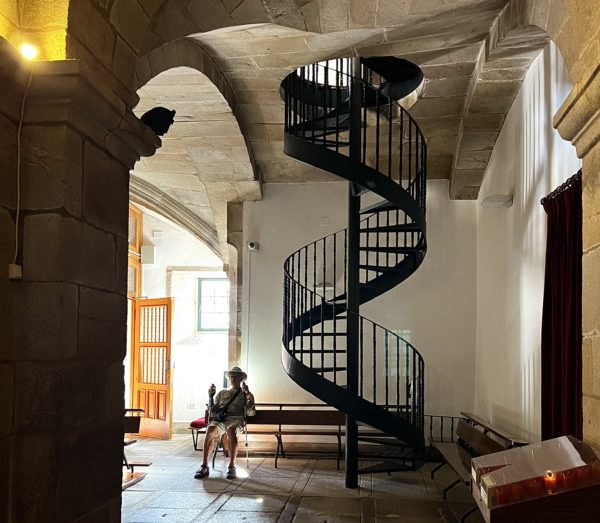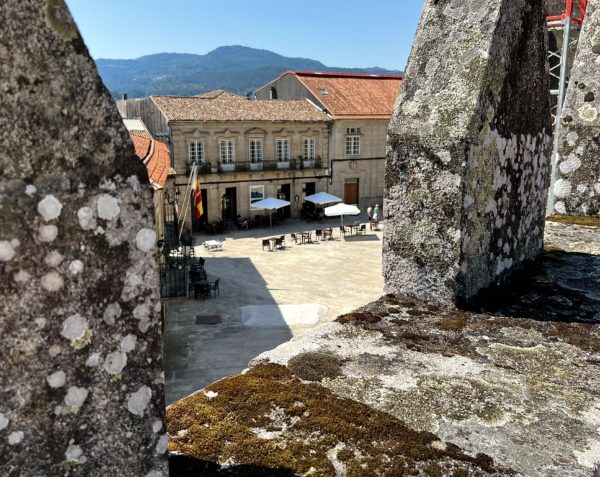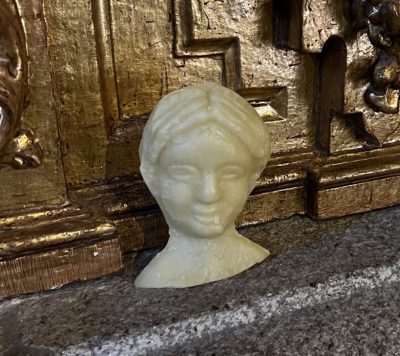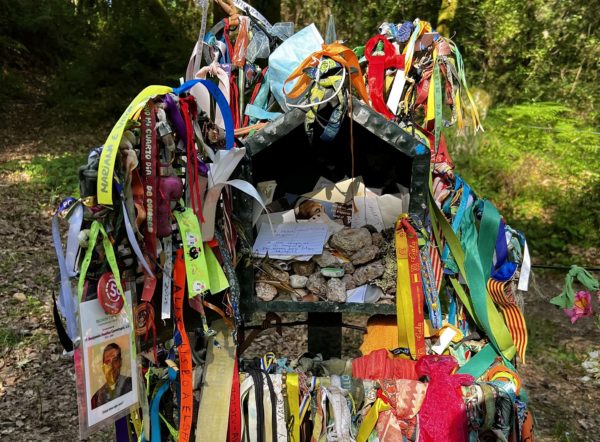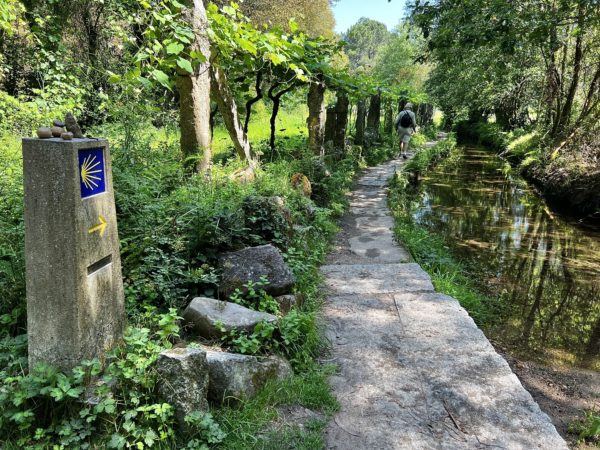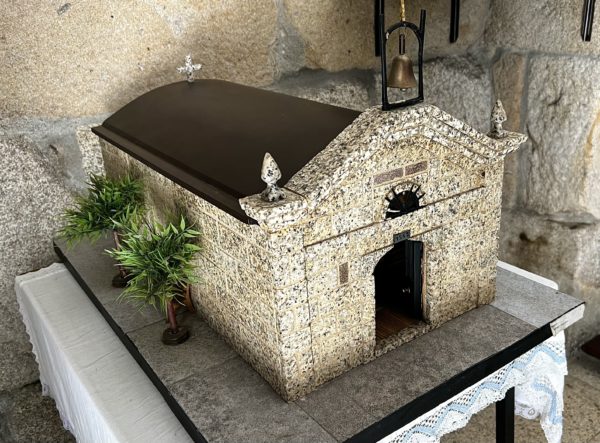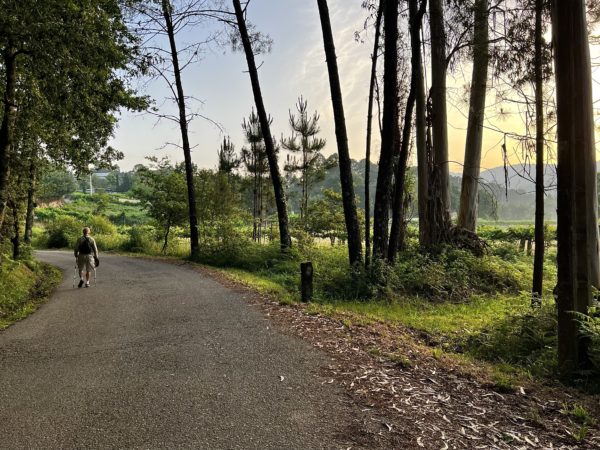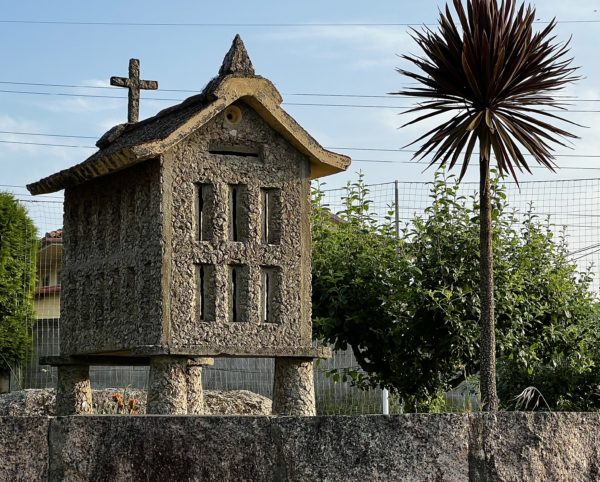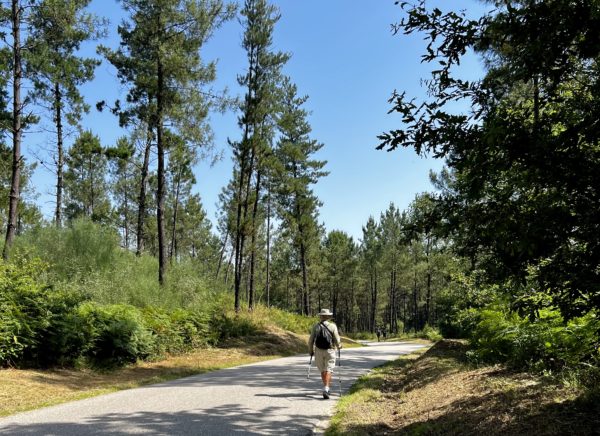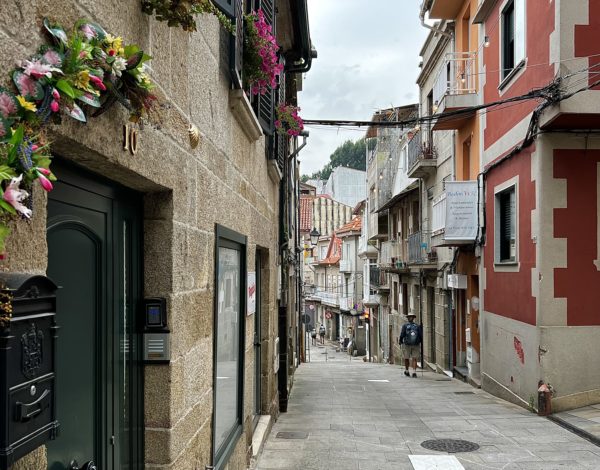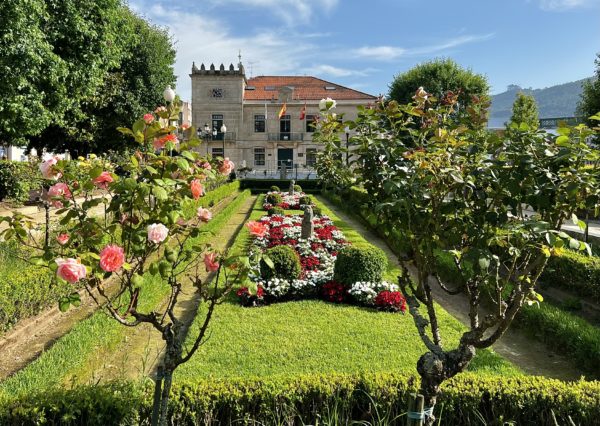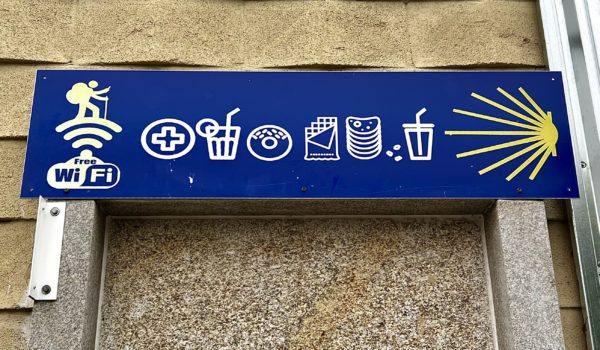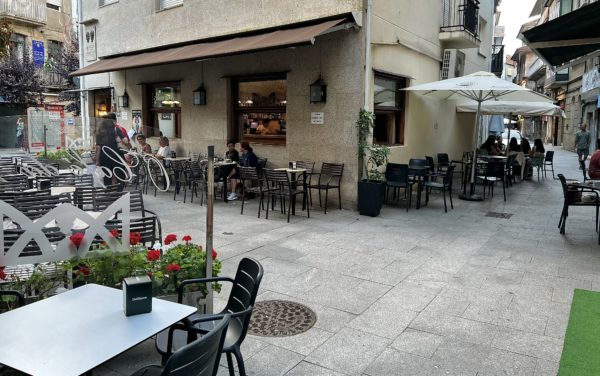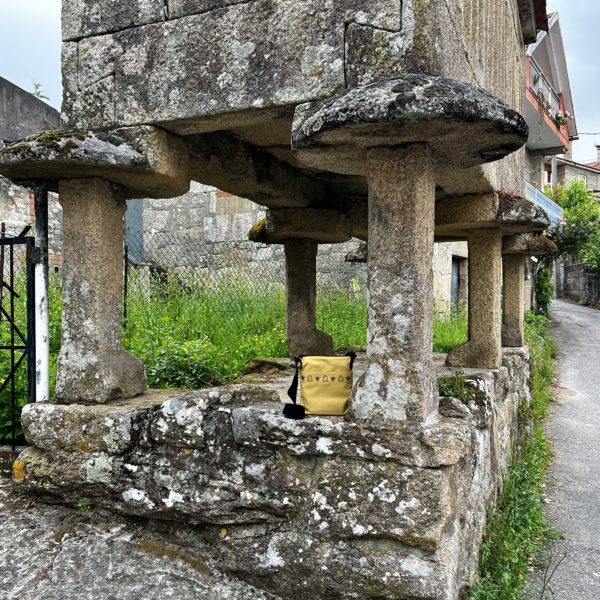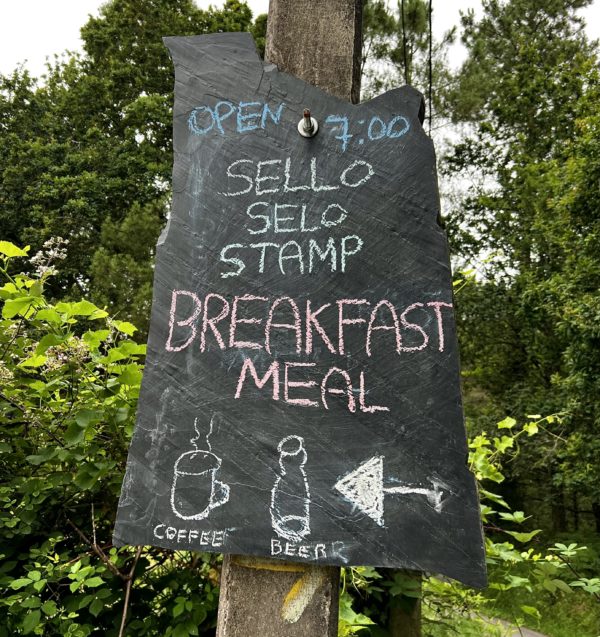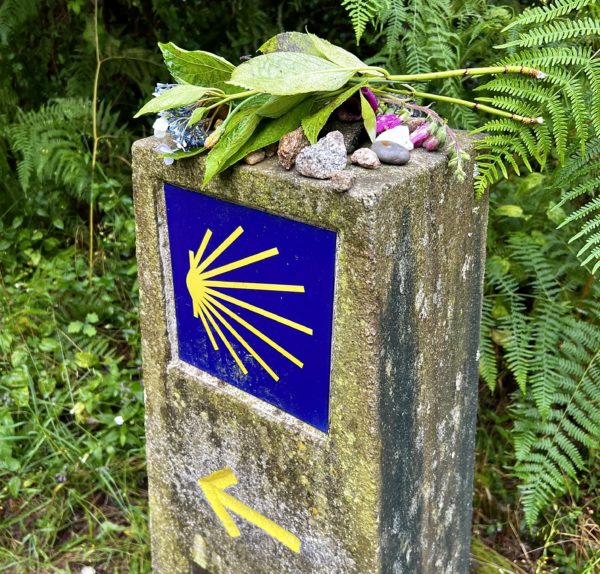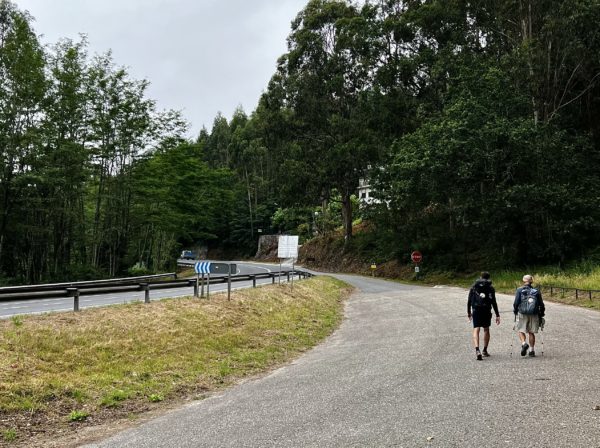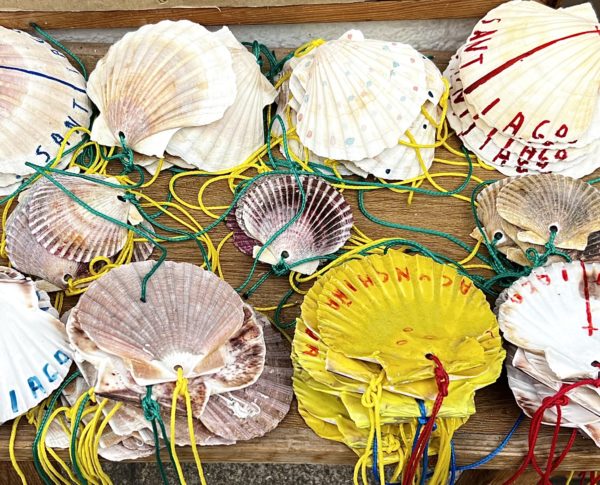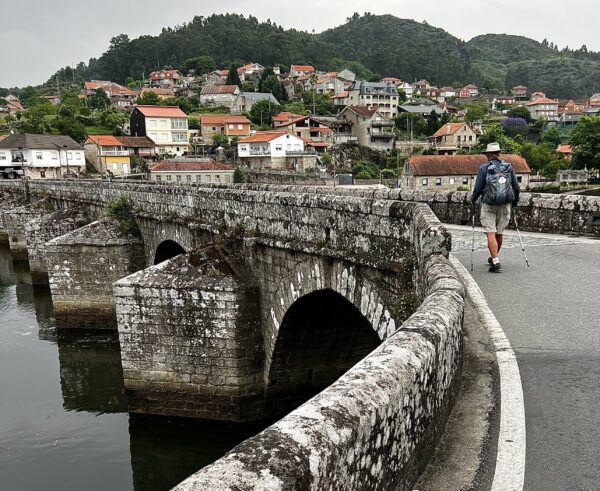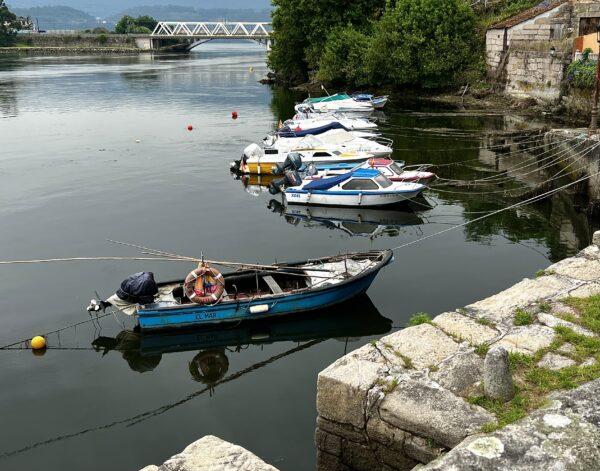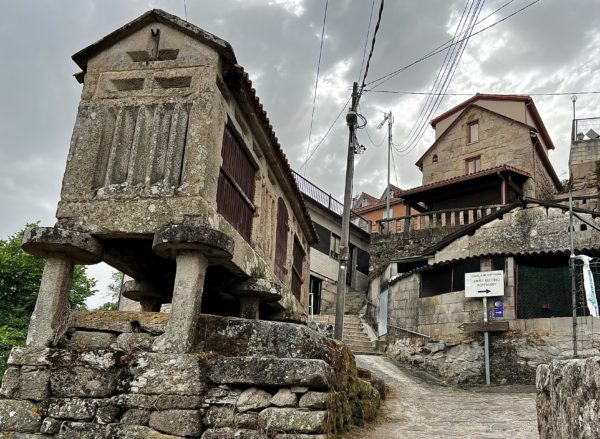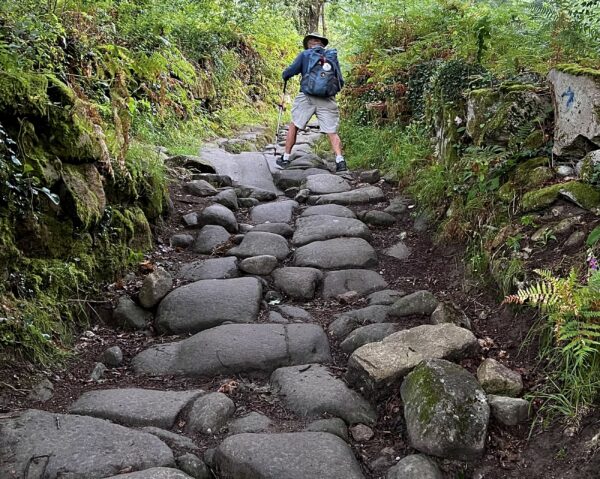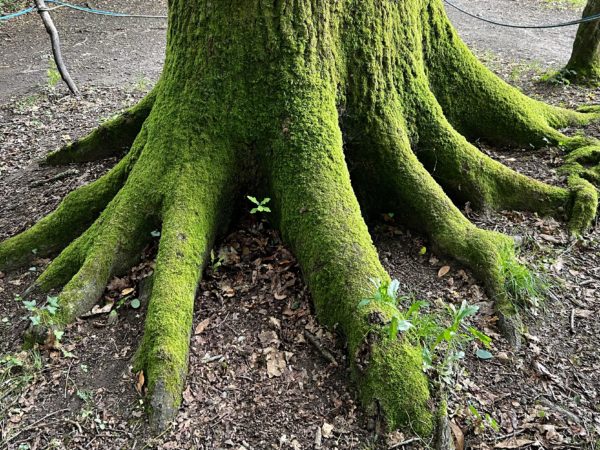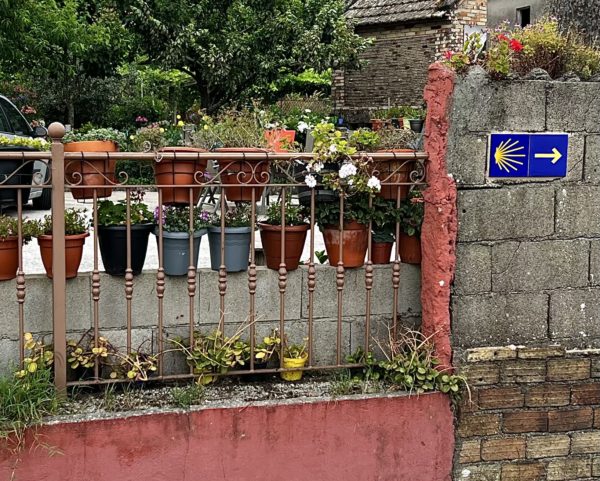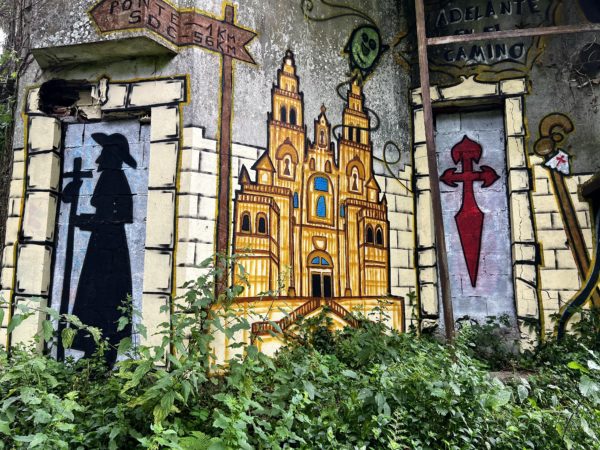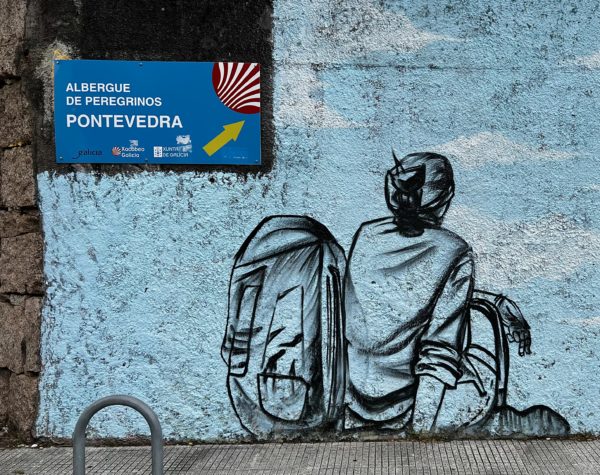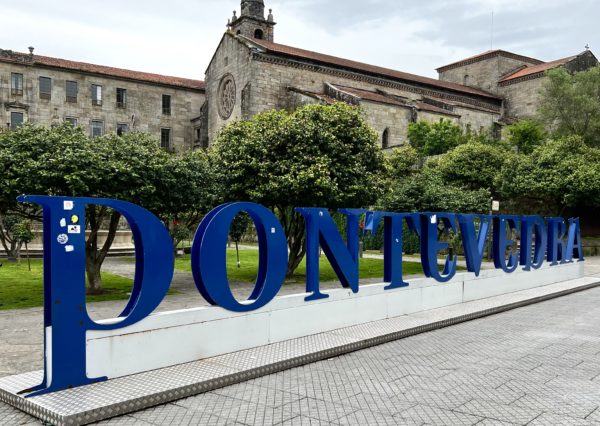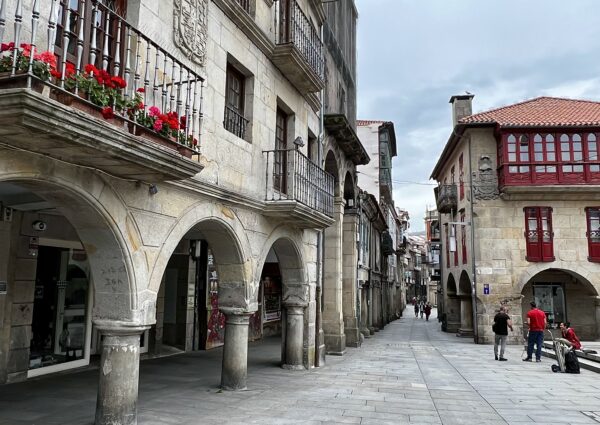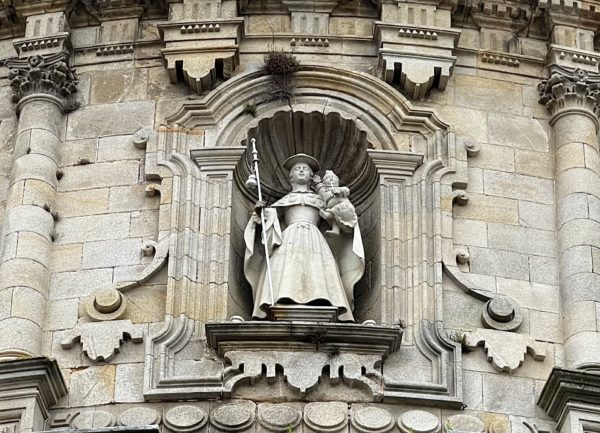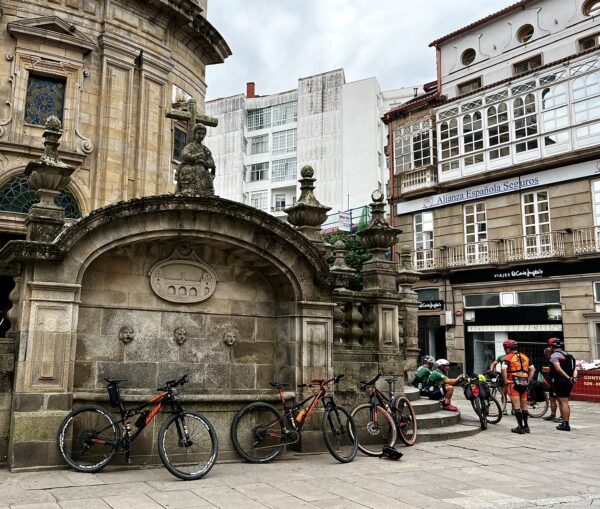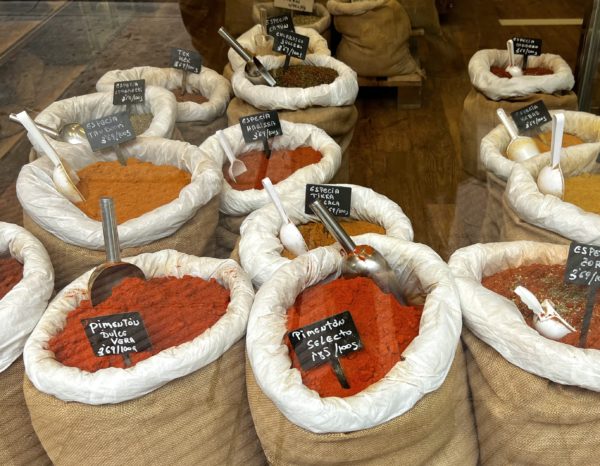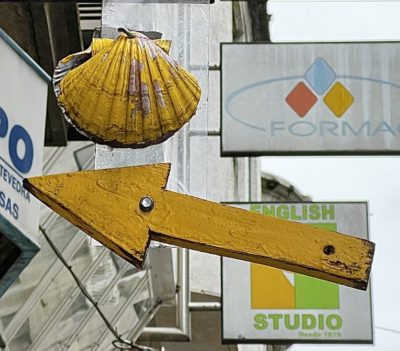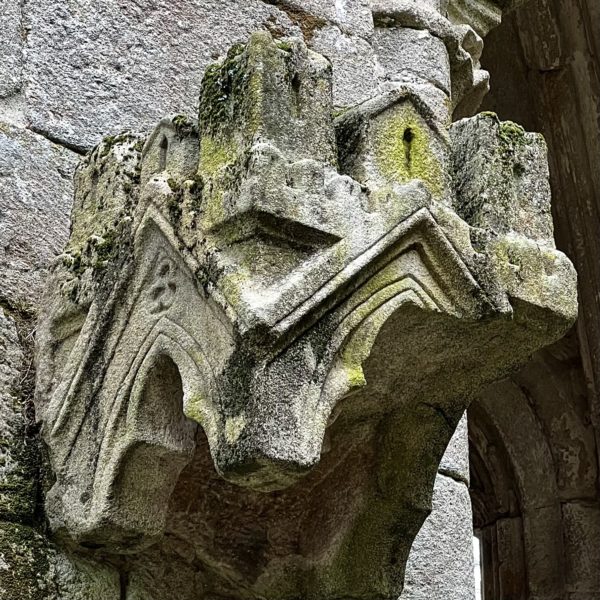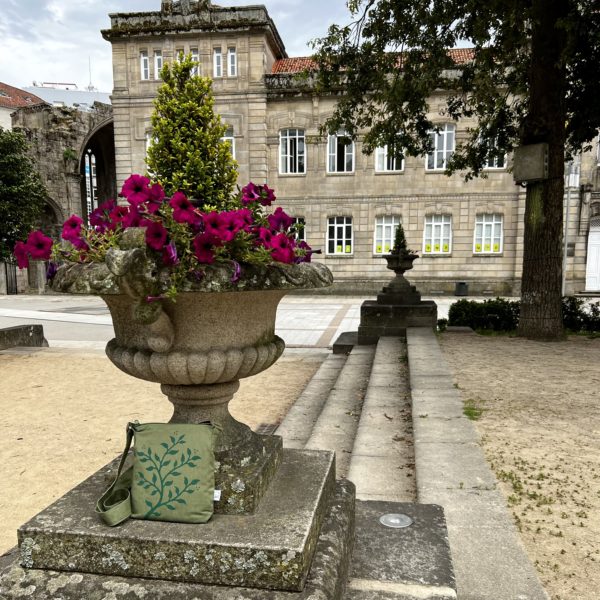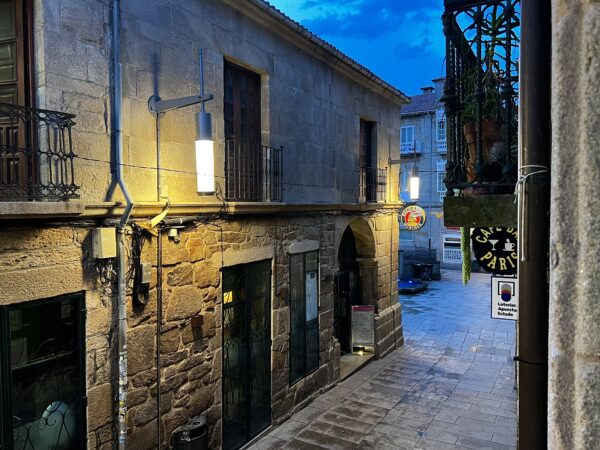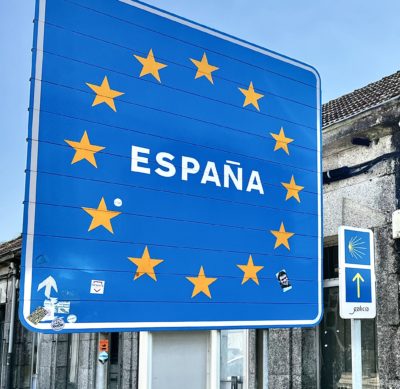
Tui is a popular starting town for Camino Portuguese and 117 km (73 miles) away from Santiago de Compostela. Walking this distance to Santiago fulfills the 100 km requirement in order to receive a Compostela certificate. It’s similar to the distance from Sarria to Santiago, the most walked stretch of Camino Frances.
The monumental Tui Cathedral rests on the highest hill and dates back to the 12th c. Changes to the Romanesque structure were done in later centuries & include a Gothic front portal.
The Cathedral’s castle-like architecture
The beautiful & peaceful cloister, my favorite spot
Where does the spiral staircase go?
Climb up to the roof for panoramic views.
At Tui’s Igrexa de San Francisco there was a head-shaped ex-voto placed beside a statue of St. James. It looked to be made of beeswax, the traditional substance used for ex-votos during the Middle Ages. Ex-votos are objects, often anatomical forms, that medieval pilgrims offered at sacred sites to ask for intersession from a saint for physical healing. Although this tradition is still practiced in Spain, I’ve seen only a few ex-votos on Caminos, so it was exciting to find this one.
Similar to past walks, for Camino Portuguese I made beeswax ex-votos for family & friends with physical challenges or in memory of. A few ex-votos were left in Porto before the walk started, and we planned to leave the rest in Santiago.
An ‘intention’ site on the walk from Tui to O Porrino featured ribbons, photos, rocks, & mementos.
Galicia is known for plenty of rainfall that keeps everything green as seen on the trail by A Fernal.
In O Porrino the Capela de San Sebastian was open and included a small model of the chapel.
Morning light near Mos on the way to Redondela, our next stop
Horreos, granary storage structures found in Galicia, date back to at least the 13th c.; a document from this period shows illustrations of these buildings in a Gothic style. The small horreo above was displayed in a yard.
Shops & bars/restaurants filled Redondela’s ‘old town’ area next to a major shopping district. It included a post office (Correos) where we sent a package of extra gear ahead to Santiago. Info about mailing gear, etc. to Santiago is listed under MAILING GEAR & BACKPACK TRANSPORT in Camino Resources, Part 2.
Flower garden in Alameda Park by the town hall
Full services offered to peregrinos
Lots of outdoor tables at cafes
The Gold Bee Bag takes a break at a large horreo in Soutomaior beyond Redondela.
A homemade sign on the Road to Ponte Sampaio is an example of ‘advertising’ sometimes found along the Camino. Signs are typically made of wood, stone, or other materials, such as this slate slab with chalk writing. It highlighted a “sello” (or stamp) plus breakfast, beer, & coffee — unfortunately, the cafe wasn’t open that day.
Sellos are often available at bars/cafes/restaurants — also at lodging, churches, and public buildings, such as town halls, etc. Each stamp has a unique design and often depicts a local historical site or cultural reference. It’s interesting to see them all together in a credencial, or ‘pilgrim’s passport.’ Digital credencials & sellos have also become available in the last few years. For more info see Camino de Santiago, Part 1.
In conversation
Hand decorated shells for sale by a casa
The medieval Puente Sampayo Bridge over the Verdugo River has Roman roots and spans over 400 feet long with 10 arches. On one side is Ponte Sampaio (where we stayed), & on the other is Arcade.
Boats lined the river.
A large horreo near Arcade with mushroom shaped posts that help keep rodents out
Hopping Roman rocks on the trail to Pontevedra
Supernaturally green tree moss
A mural of Santiago’s Cathedral was painted along a roadway near Pontevedra.
Walker art by the municipal albergue located on the edge of the city
Pontevedra!
In the heart of Pontevedra’s historical center
The Virgen in pilgrim gear stands above the front portal of Iglesia de la Virgen Peregrina, a scallop shaped Baroque structure built in the 18th c.
Cyclists resting by the church
Spices displayed in a store window
Detail from the Ruinas de San Domingo of the Santo Domingo convent chapter founded in the 13th c. — the ruins are adjacent to the park Alameda Arquitecto Sesmeros where we strolled before afternoon showers arrived.
Pontevedra at night — the next day it was onward to Caldas de Reis and the rest of Camino Portuguese.

